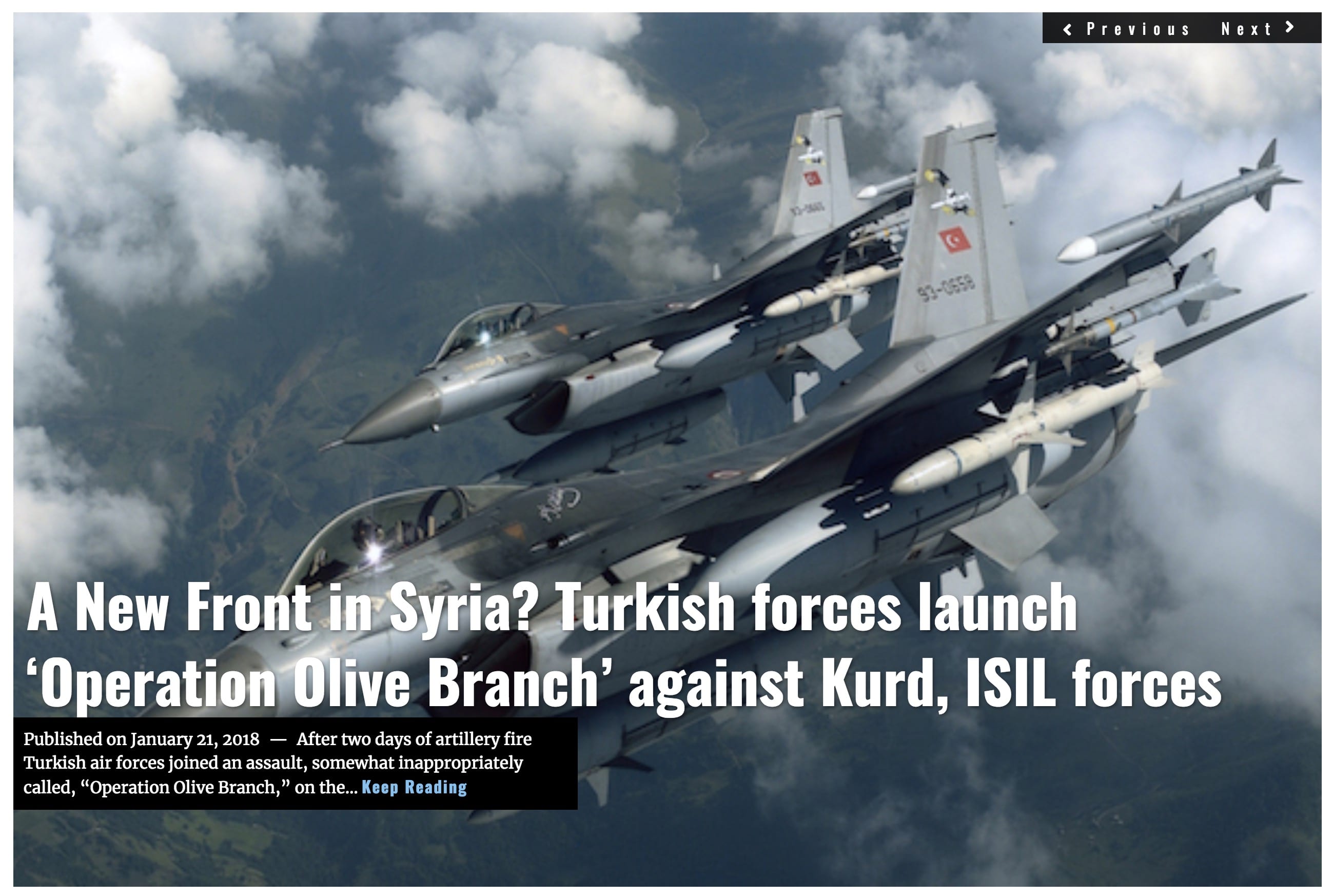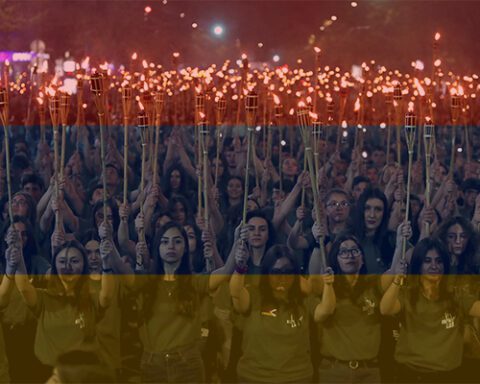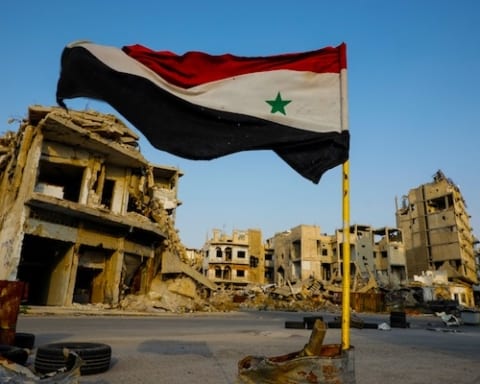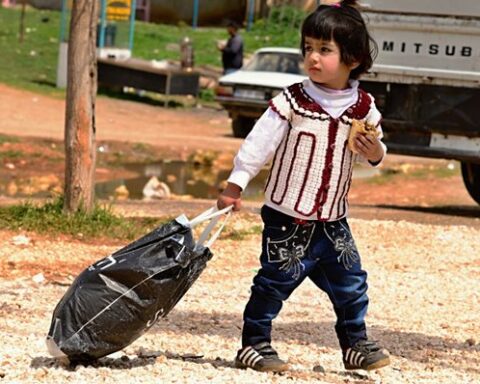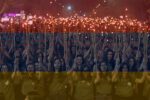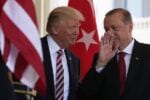Turkey’s new Syria offensive dubbed “Operation Olive Branch” has far reaching consequences in the region, which include pursuit of an Ankara-Tehran-Moscow-Damascus coalition power block that will directly rival Western powers.
Intro (Turkey Enters)
On January 20th, at 1700 hours local time, Turkish armed forces launched an offensive on the Afrin Canton, a Kurdish controlled enclave in northern Syria. A few hours earlier, Turkish assets had targeted the Kurdish-held Menagh airbase north of Aleppo City, less than 10 kilometers from Afrin. The offensive is part of a multi-stage military operation called “Operation Olive Branch”. Its goal, to create a buffer zone on the Syrian side which will be clear of any organized governing bodies or tactical-level resistance groups that adhere to the Kurdish cause or ethnicity.
![Image Turkish soldiers prepare their tanks near the Syrian-Turkish border, at Reyhanli district in Hatay, Turkey, January, 21, 2018 [Sedat Suna / EPA]](https://limacharlienews.com/wp-content/uploads/2018/01/Turkey-Syria-operation.jpg)
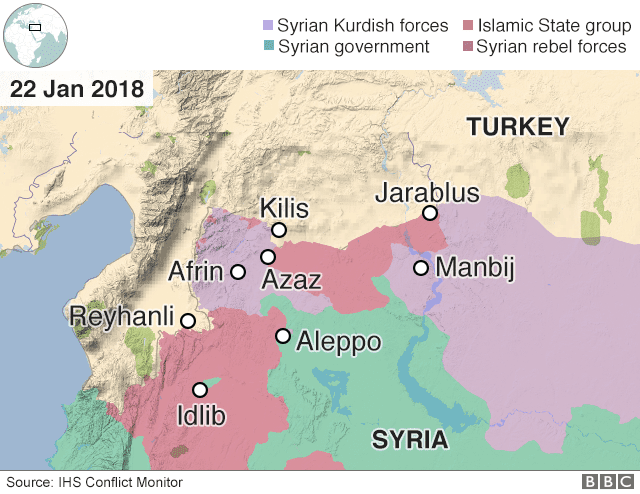
The Turkish military offensive came, in part, due to growing tensions arising from Western support of the US-supported counter-Islamic State coalition known as Syrian Democratic Forces (SDF), of which the YPG is an integral part of. Turkey has vocally protested against the extensive support the SDF and the YPG have received from US, French, British, and other NATO allies in the SDF’s battle against IS. This has included training, arms, equipment, and direct frontline support provided by Western special operations forces.
Since the SDF’s inception, the Turkish government, under the leadership of Turkish President Recep Tayyip Erdogan, has tried every trick in the book – including recruiting, and paying soon-to-be ranking members of the US government’s executive branch to push an anti-SDF agenda. The problem with such agendas, however, is that the SDF and YPG proved too good at combating the enemy on the ground to be dismissed.
Three’s Company
Moscow – On January 18th, Turkish Chief of the General Staff, Hulusi Akar, and Turkey’s National Intelligence Organization head Hakan Fidan, met with Russian Chief of General Staff General Valery Gerasimov and Russian Minister of Defense Sergey Shoigu. The meeting was to anchor the operation with the Russians.
On the same day, members of the Turkish foreign ministry met with the Iranian ambassador to Turkey, Bahman Hosseinpour, to anchor Iranian cooperation for the operation. In exchange for Iranian and Russian cooperation, Turkey agreed to keep all parties apprised of frontline conditions through their Ankara embassies.
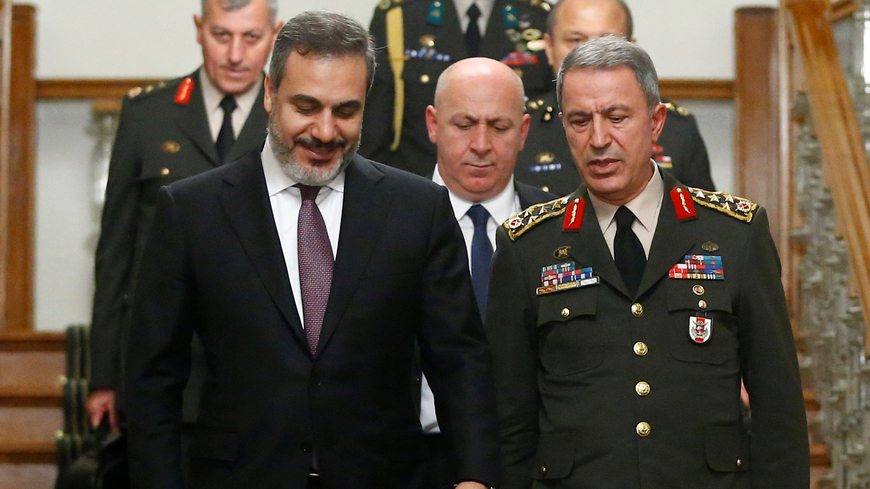
In addition to this promise, it appears that Turkey offered redefined de-escalation lines in northern Syria that would benefit all three parties. No doubt, part of the new configuration is that the Assad regime will gain complete control over the Aleppo province, and the contested city of Aleppo along with it. In essence, these actions have created an Ankara-Tehran-Moscow-Damascus coalition power block with interests that will directly rival that of the Washington-Baghdad-Erbil one.
The support of Tehran, Moscow and Damascus is essential for the operation.
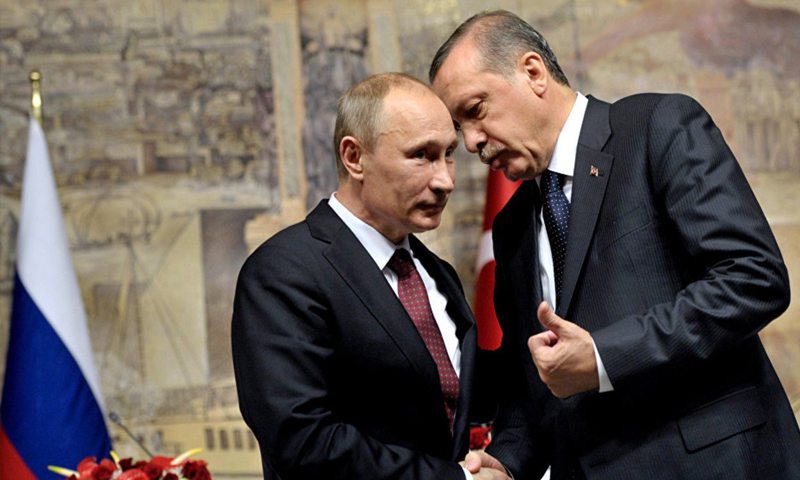
On January 18th, Turkish Defense Minister Nurettin Canikli stated that the primary concern for any air operations inside Syria was not the Syrian air force, but rather the Russian anti-air systems installed throughout Syria. On that same day, President Bashar al Assad stated that the Syrian air force will shoot down any Turkish warplanes that entered Syrian airspace; a threat that Assad has yet to follow up on, considering Syria’s Russian ally has sided with Ankara.
Reports indicate, however, that to safeguard the operation’s success, Turkey has deployed electronic warfare systems along the border area to counter possible regime anti-air attacks, as well as disrupt Russian anti-air systems.
Russia’s Defense Ministry stated that as a result of the Turkish operation, Russia is withdrawing its troops from the immediate areas, primarily from the Russian held border area of Tall Rifat. Tall Rifat is located 4 kilometers from where the Turkish forces first engaged with the SDF forces. The official reason for the withdrawal was cited as “for [troops’] security”.
The Command of the Russian force grouping in Syria took security measures for Russian servicemen who were in the Afrin Canton, where the Turkish Armed Forces started a "special operation" against the Kurdish formations https://t.co/Fn5cQwZfU5
— Минобороны России (@mod_russia) January 20, 2018
According to statements made by the Turkish government, including personal statements by its President, once the Afrin operation has stabilized, Turkey intends to advance further into Syria and attack the town of Manbij, east of Afrin on the banks of the Euphrates River. Manbij is, in addition to being a main staging ground for SDF operations against the Islamic State, where the US Special Operations activities alongside the SDF are orchestrated. As such there are a highly concentrated number of American servicemen operating out of it, many of which are now at risk due to NATO ally Turkey’s advancements.
In total, the US alone has over 2,000 troops in the area, most of which function as advisers and support elements to SDF units. Ultimately, Turkey is no doubt betting that the US will see this provocation as dire enough to withdraw its troops, and its support from the YPG and SDF along with it. Turkey has historically not been above firing on positions that have both Western and Kurdish forces in it, when it has seen fit do so.
“The attacks on the Mount Sinjar KRG base in Iraq and the YPG base in Mount Qarachok, near the town of al Malikiyah, both had American Special Operators present when they took place. At Mount Qarachok, US Army Special Forces operators were reportedly “uncomfortably close” to the air strike, according to al-Monitor. The Qatar-based Combined Air Operations Center (CAOC), which controls and coordinates the use of military air assets within the US-led coalition, had denied a request by Turkey to strike the Kurdish positions. The Turks ignored the denied request and attacked an hour later.”
-From “Turks and Kurds, an endless cycle,” published May 7, 2017
The situation will further provoke the Kurdish-Turkish situation, and likely create a self validating and justifying scenario where Kurdish militia groups inside Turkey increase their insurgency activities. In addition to this, the situation in eastern Syria is likely to unravel the diplomatic and stabilizing efforts by the United States, which will expedite Syria’s further demise into a worsening humanitarian disasterous civil war.
Operation Olive Branch: Day 2, January 21st
The Turkish Air Force attempted to soften ground resistance at the villages. The SDF repelled a ground offensive in the villages of Shinkal, Rajo, Bilbil, Kurdo, and Dikmash by the Turkish 2nd Army and allied militia groups. Turkish tanks attempted to breach the SDF perimeter at the village of Dikmash, resulting in two of the assaulting tanks being destroyed by US-provided infantry Anti-Tank Guided Weapons (ATGW), the AT4 (M136).
What is described as “old school anti-tank tactics” were employed at the village of Kurdo, likely involving anti-tank mines, Improvised Explosive Devices (IEDs), and molotov cocktails, torched at least one Turkish tank.
https://twitter.com/AylinaKilic/status/955441503056392193
Casualty reports are scarce, with the Turkish armed forces refusing to release information and the SDF habitually not doing so. Civilian casualties were reported, however, by the regional YPG press officer, Mustafa Shan. Shan stated that “9 civilians were killed, including 6 children. The rest we couldn’t recognize because not much was left of their bodies.” The casualties were primarily described as having occurred in the village of Siruj, and caused by artillery shelling against SDF positions. At least two additional civilians were killed, and a further twenty-four were injured, in other unnamed skirmishes throughout the day.
Afrin?
The Afrin Canton is part of the expanding corridor of Kurdish influence that runs along the upper levant region, and across the Turkish-Syrian border. This corridor piggybacks onto the preexisting Shia controlled corridor, a longstanding corridor that facilitates and enables Iranian influence in Lebanon and Syria. At present, the corridor consists primarily of the de facto autonomous cantons of Afrin, Jazira, and Kobani, in northern Syria, which together make up the so called Federation of Northern Syria-Rojava, also known as Western Kurdistan. The area runs along the Turkish-Syrian border, and creates in practice a Kurdish controlled corridor of influence, with some 5 million people, mostly of Kurdish ethnicity, within it. On March 17, 2016, the federation of cantons declared itself a unified state, with a federal system of governing.
“Our country doesn’t have eyes on even one inch of anyone’s land. Turkey’s primary objective with this operation is to ensure its own national security as well as to contribute to Syria’s territorial integrity and the safety of Syrian people’s lives and properties.” pic.twitter.com/LBzu9LGhTb
— Presidency of the Republic of Türkiye (@trpresidency) January 22, 2018
Inside the federation an assembly has been created with representatives from the political groups, cantons, and interest groups. The assembly is presently working towards creating a pro-democratic movement. On December 29, 2016, the “Constituent Assembly of the Democratic Federalism of Northern Syria” created a document outlining the “Political Document for the Future of Syria,” which seeks to create a constitution with democratic values, and to create a regional council that would govern without the influence from Ankara, Baghdad, or Damascus. This Kurdish controlled corridor creates a Kurdish buffer state that the Kurdish movements could use to expand and establish themselves as a viable self-governing state.
Operation Olive Branch: Day 3, January 22nd
The Turkish Air Force struck SDF positions throughout Rajo, Bilbil, Adama and Surki, in the southern parts of Afrin. The air-to-ground strikes against positions in Adama and Surki were followed up by an offensive by ground forces. The assault was reportedly repelled by SDF forces, but reports indicate that the SDF suffered high casualty rates. SDF spokespersons were quick to point out that the Turkish forces also suffered high casualty rates during their offensive.
At least two Turkish tanks were destroyed by SDF infantry units, using ATGWs, during the assault on Rajo.
President Erdoğan: “Those, who devised a game in Syria, think they have acted cunningly by changing the terrorist organization’s name. In our eyes, all kinds of organizations, comprised of terrorists, are called terrorist organizations no matter what their names are.” pic.twitter.com/lfYGt8K08b
— Presidency of the Republic of Türkiye (@trpresidency) January 20, 2018
The Call of the US
US State Department spokesperson Heather Nauert made a public plea on January 18th for Turkey not to cross over the border and attack Afrin. According to multiple reports, US Secretary of State Rex Tillerson had, in the days leading up to the January 18th press conference, made several private requests to the Turkish government to not follow through with the operation. The Turkish government’s response was a display of unwavering support for the offensive, and a firm determination to remove the emerging Kurdish control of the border area.
Officially, the Turkish government says that the ultimate goal of the operation is to drive the last nail in the coffin of IS. Yet, its actions on, and since January 20th, indicate that while token attacks against IS strongholds are indeed carried out, the focus is on Kurdish enclaves throughout northern Syria.
One interesting aspect of the operation is that while internationally Turkey represents that it is seeking the “total annihilation of the Islamic State,” domestically the term “Islamic State” has been replaced by the more generic and state-defined term “terrorist.” The PKK, and all affiliated organizations, have long been defined by the Turkish government as de facto terror groups.
Bölge, Türkiye için bir terör tehdidi olmaktan çıkana kadar, insanların huzur içinde yaşayabilecekleri bir yer haline gelene kadar operasyonlarımız sürecektir.
Türkiye bu konuda kimseden icazet almak durumunda değildir.
— Recep Tayyip Erdoğan (@RTErdogan) January 22, 2018
The US State Department has publicly expressed concern over the Afrin situation, highlighting “the plight of innocent civilians” and urging Turkey to exercise “restraint to ensure its military operations avoid civilian casualties.”
However, few observers believe that the US will act beyond the bare minimum on the Afrin affair.
John Sjoholm, Lima Charlie News
John Sjoholm is Lima Charlie’s Middle East Bureau Chief, managing editor, and founder of the consulting firm Erudite Group. A seasoned expert on Middle East and North Africa matters, he has a background in security contracting and has served as a geopolitical advisor to regional leaders. He was educated in religion and languages in Sana’a, Yemen, and Cairo, Egypt, and has lived in the region since 2005, contributing to numerous Western-supported stabilisation projects. He currently resides in Jordan. Follow John on Twitter @JohnSjoholmLC
Lima Charlie World provides global news, featuring insight & analysis by military veterans, intelligence professionals and foreign policy experts Worldwide.
For up-to-date news, please follow us on twitter at @LimaCharlieNews
In case you missed it:

![Image Turkish Delight in Afrin - A guide to Turkey's far reaching offensive in Syria [Lima Charlie News]](https://limacharlienews.com/wp-content/uploads/2018/01/Turkish-Delight-in-Afrin-A-guide-to-Turkeys-far-reaching-offensive-in-Syria-1.png)

